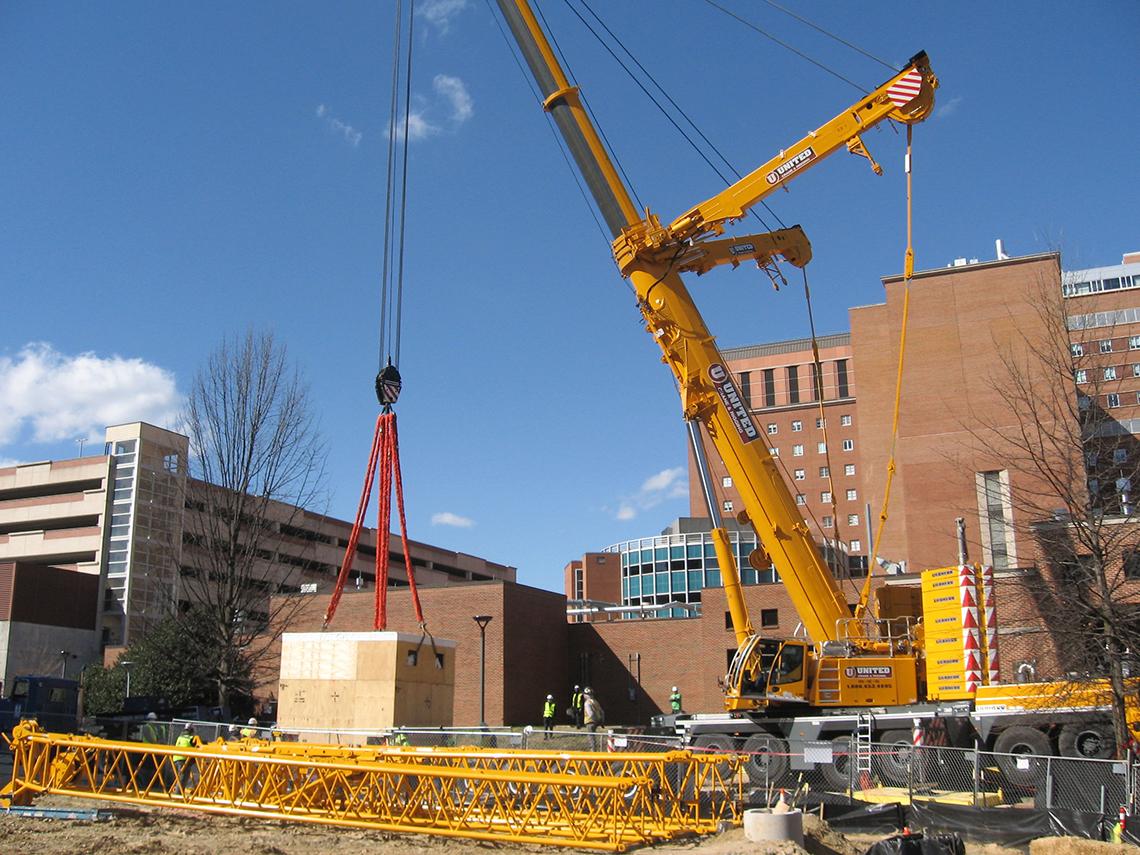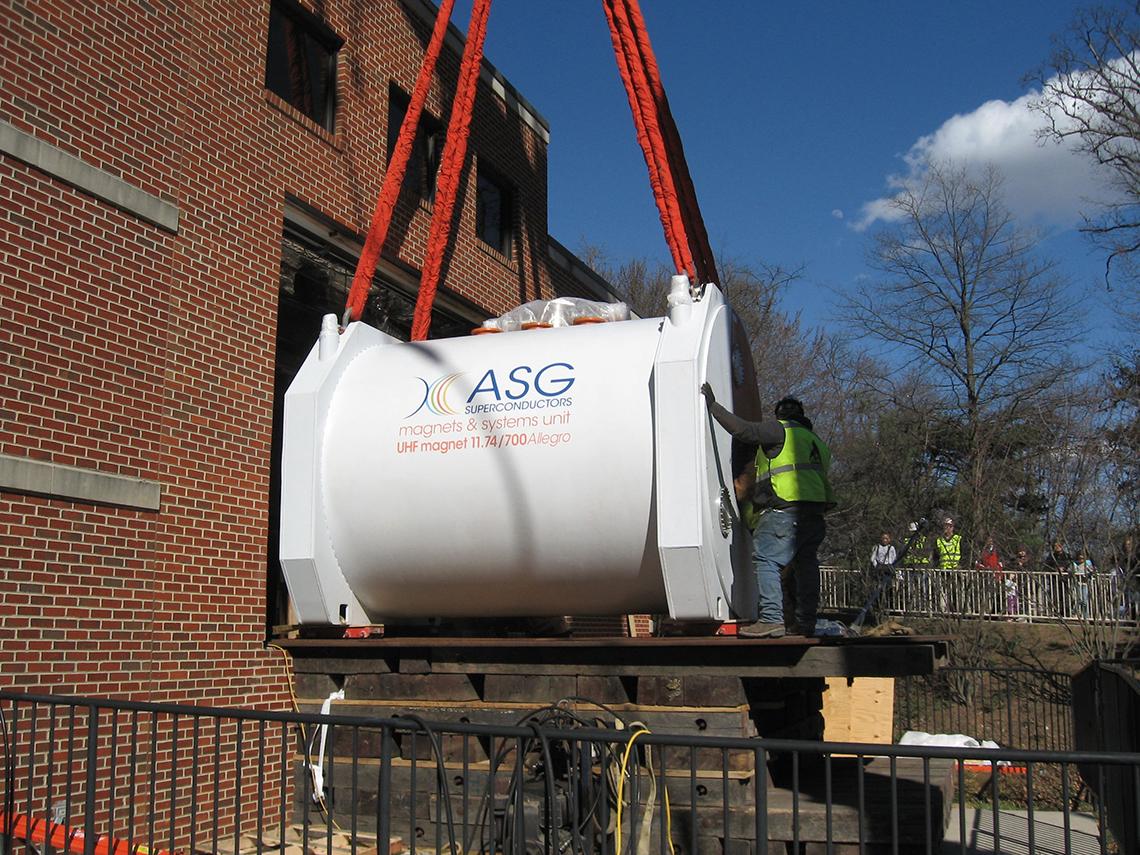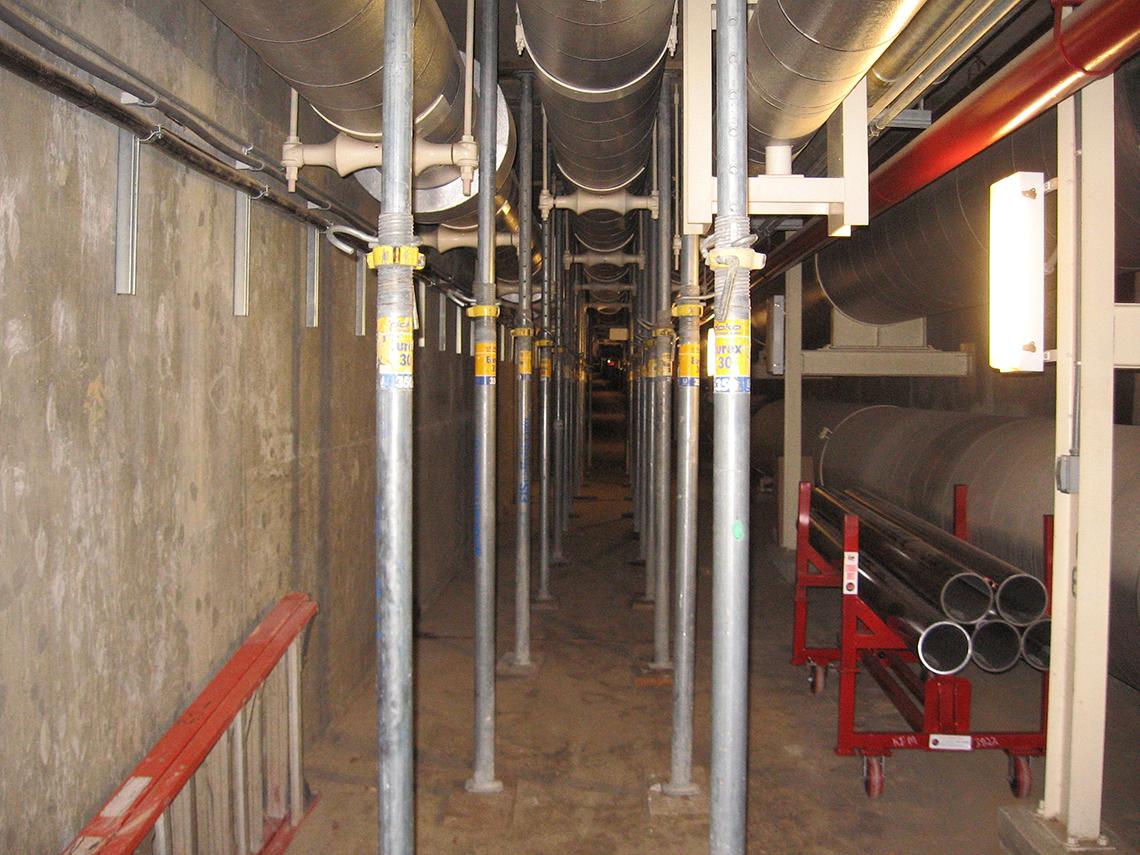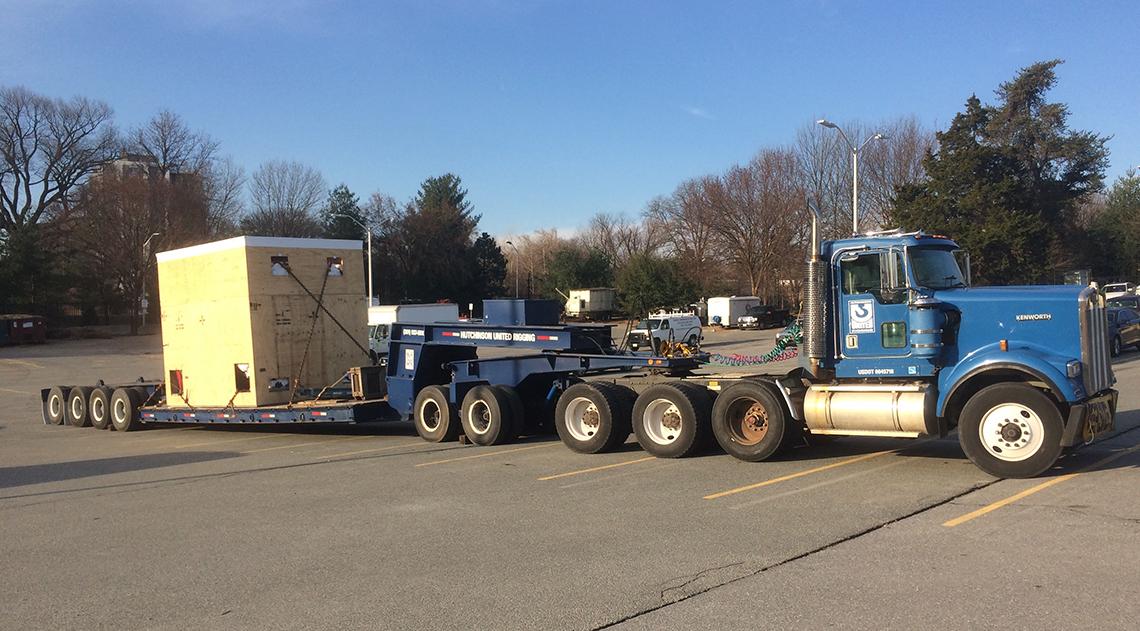Another Huge MRI Magnet Delivered to NIH
On Mar. 16, an 11.7-Tesla magnet for advanced MRI studies—the strongest of its kind in the world—was delivered to NIH’s NMR Research Center in Bldg. 10. Unlike last fall’s delivery of a 19-ton magnet through the facility’s roof, this one entered through a side bay door at the center. The behemoth now resides in Rm. 1D703.
It took 16 tractor-trailers to deliver both the 51-dry-ton magnet and the swinging-arm crane used to seat it. The world’s strongest brain scanner, it has the potential to study the brain at resolutions well below current standards of about one millimeter. Scientists anticipate that it will enable them to see brain disease hallmarks that have currently escaped detection. Excited about the recent delivery, researchers say the 11.7T machine, which succeeds a 7T predecessor, could catalyze the development of novel approaches to look at brain anatomy and function.
The new machine, jointly funded by NINDS and NIMH, will require about 35,000 liters of helium to cool the superconductive coils that create the magnetic field. Some 380 tons of steel were needed to prevent the magnet’s field from interfering with other equipment in the building.
“This is a large jump [in field strength],” said NIMH principal investigator Dr. Peter Bandettini, who noted that MRI magnets used in most clinical studies have been 1.5T or 3T machines, with NIH’s two 7T machines “at the upper end of research scanner use.”
When the 11.7T machine becomes ready for use with human patients, scientists will have to develop protocols to help people slowly adjust to the strong magnetic fields, or else they may experience vertigo; that was a lesson from the 7T machines.
“With higher field strength we get three things,” Bandettini said. “First, increased signal or sensitivity. Second, increased tissue and function contrast. And third, unanticipated types of contrast that were previously not seen at lower field strengths.
“It’s this third element where we don’t know what to expect,” he explained. “However we have a good idea for the most part. With these gains, we can either go to higher resolution or image faster as we won’t need as much averaging. It’s almost analogous to creating a telescope with a larger lens that gathers light more efficiently.
“It might turn out that at 7T, we were just below some sensitivity threshold, stopping us from seeing a wide range of functional organization and biomarkers for disorders. This is one of the exciting parts—looking into the unknown.
“We’d love to do whole-brain layer-specific functional MRI,” added Bandettini. “Rather than just mapping 1 cm ‘blobs’ of activation, as is done in most fMRI, we may start to be able to differentiate activation between upper and lower layers of the cortical sheath throughout the entire brain, which may open up qualitatively new and more detail-rich functional connectivity information.”
The new magnet’s higher field strength, he said, will be much more sensitive to subtle deposits of iron and other metals that are related to some brain disorders.
NINDS is the lead institute on the new magnet, including principal investigators Dr. Alan Koretsky and Dr. Jeff Duyn.
The magnet itself was originally made by Agilent but then remanufactured by a company in Milan, Italy, called ASG. The console for the magnet—the computer system that generates and analyzes the NMR signals used in MRI—is made by Siemens. Fabrication of signal detectors and integration of these within the system will be done by scientists in the NMR center.
A video of the delivery can be viewed at https://youtu.be/BeFoeBfKKL0.




